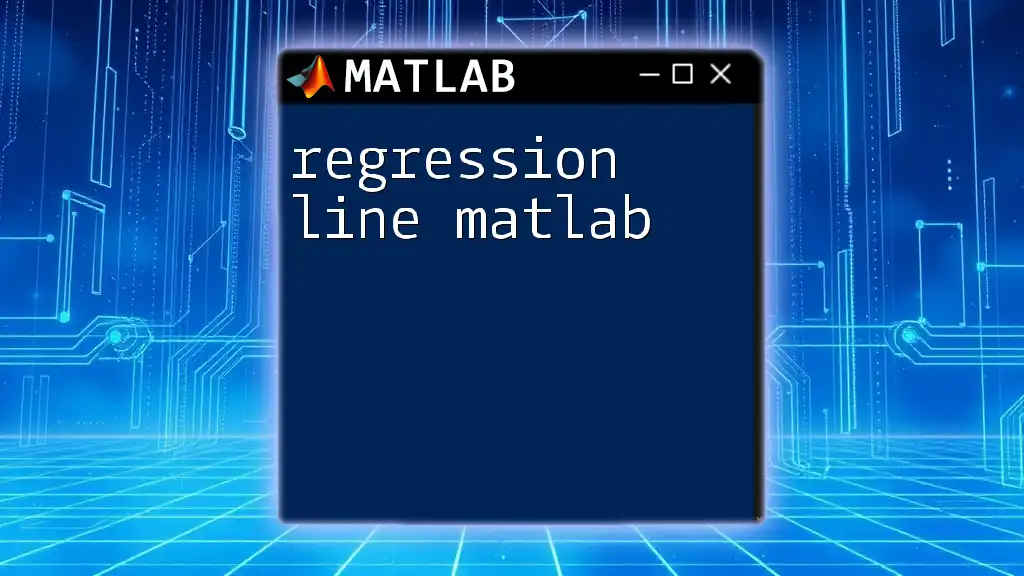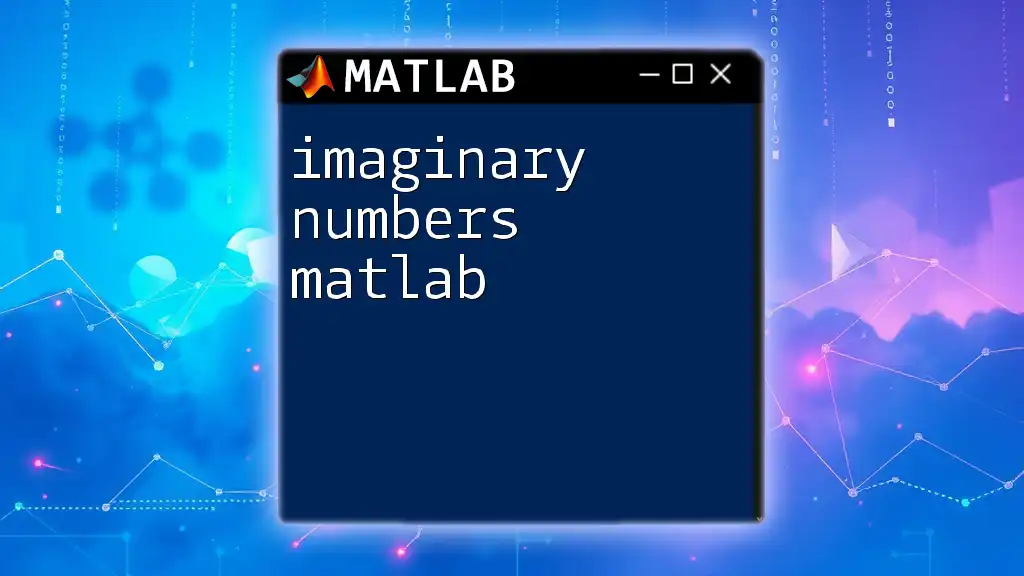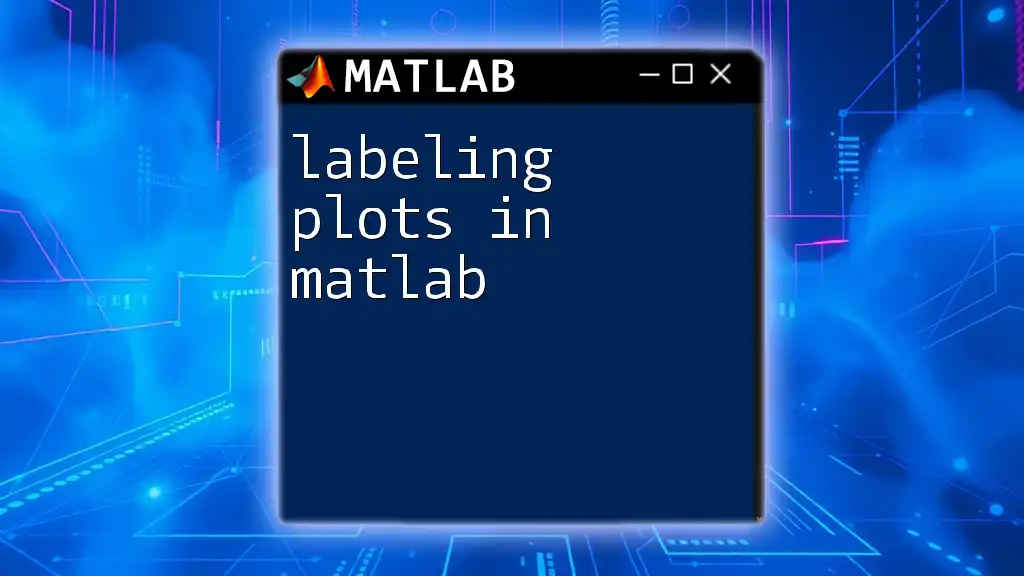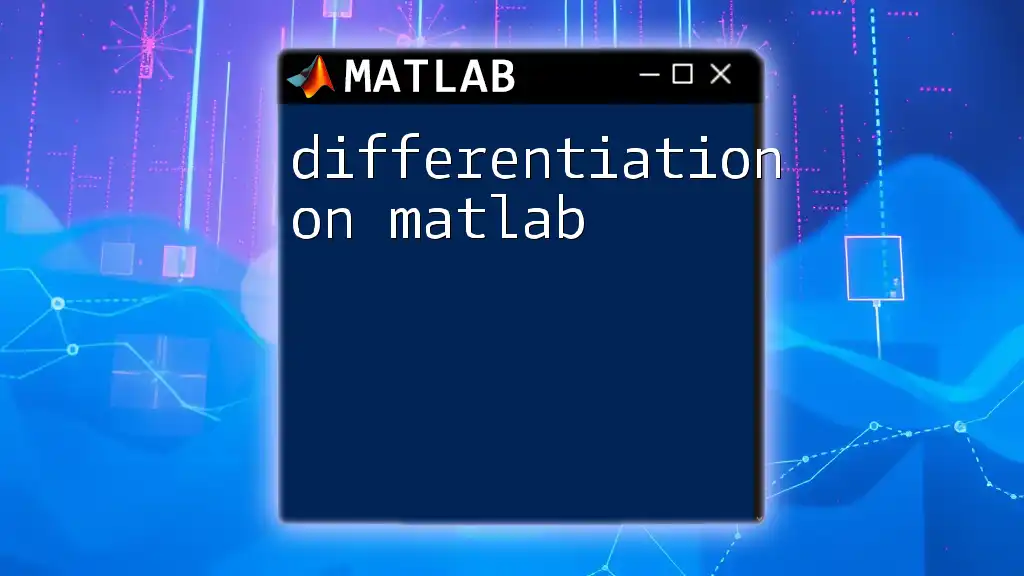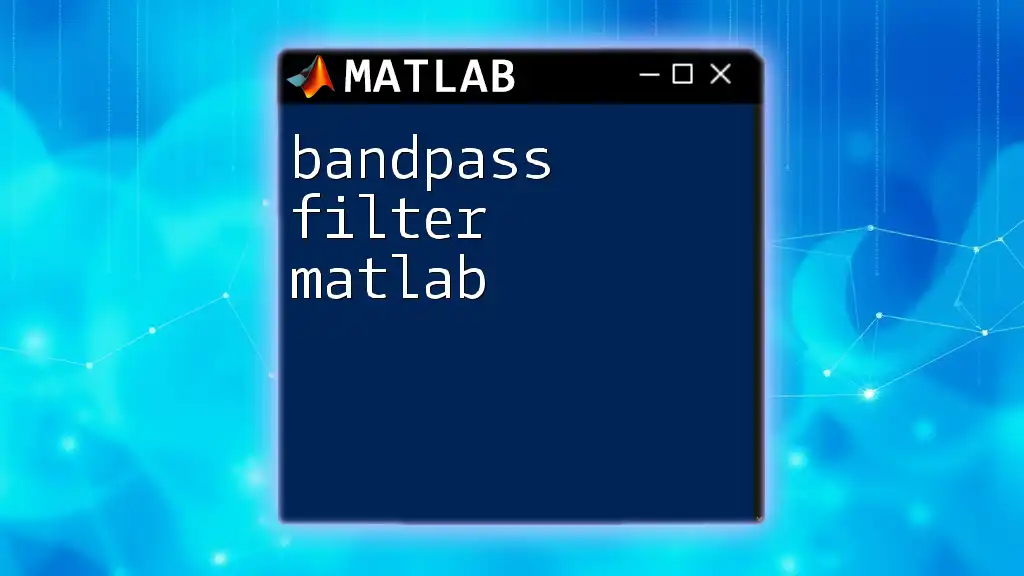The Image Processing Toolbox in MATLAB provides a comprehensive suite of functions and tools for image analysis, enhancement, and processing, enabling users to manipulate and analyze images efficiently.
Here's a simple example of how to convert an image to grayscale using this toolbox:
% Read an image from file
img = imread('example_image.jpg');
% Convert the image to grayscale
gray_img = rgb2gray(img);
% Display the original and grayscale images
figure;
subplot(1, 2, 1); imshow(img); title('Original Image');
subplot(1, 2, 2); imshow(gray_img); title('Grayscale Image');
Getting Started with the Imaging Processing Toolbox
Installing the Imaging Processing Toolbox
To begin using the imaging processing toolbox in MATLAB, you first need to ensure that it is installed. MATLAB's toolbox allows users to perform complex image processing tasks with ease, but it must be correctly configured.
You can check whether the toolbox is installed by executing the following command in the MATLAB Command Window:
ver
This command lists all installed toolboxes. If you don’t see the Imaging Processing Toolbox in the list, you can install it by navigating to the Add-Ons toolbar in MATLAB and selecting ‘Get Add-Ons’. From there, search for the Imaging Processing Toolbox and follow the prompts for installation.
Understanding the Interface
Once installed, understanding the MATLAB interface is crucial. Start by familiarizing yourself with the Toolstrip, which provides quick access to various functions. You can access the toolbox features directly from the Toolstrip under the Apps tab or by using command-line functions specific to image processing.
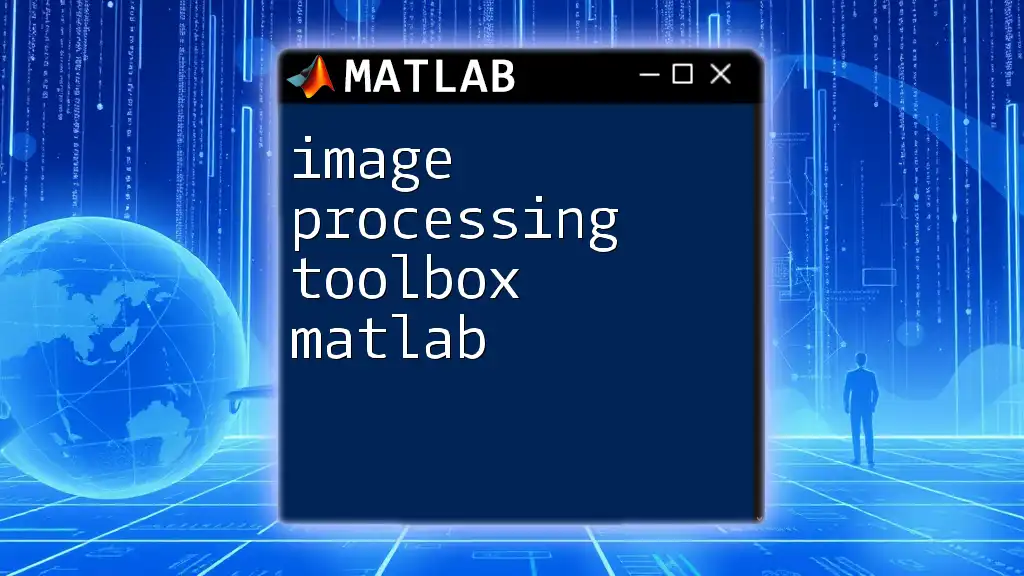
Core Concepts in Image Processing
Types of Images
The imagery you will be working with can fall into various categories. Primarily, images can be divided into:
- Grayscale Images: These images contain shades of gray, and each pixel value corresponds to the intensity of light.
- Color Images: Typically represented in RGB format, these images combine red, green, and blue channels to create a plethora of colors.
Image Formats
Different image formats can affect how you work with them in MATLAB. Some commonly supported formats include JPEG, PNG, and TIFF. Understanding how to handle these formats is essential. To read an image in MATLAB, use the `imread` function, which automatically detects the appropriate format.

Basic Image Processing Techniques
Reading and Displaying Images
The first step in any image processing task is to read an image file into MATLAB's workspace. You can do this using the following code:
img = imread('image.jpg');
imshow(img);
In this example, the `imread` function reads the image file, while `imshow` displays it in a MATLAB figure window. This straightforward process allows you to visualize the image before applying any processing techniques.
Image Transformation
Transforming images—such as resizing and rotating—is crucial for various applications in image processing.
Resizing Images
You might need to resize images for uniformity. Here's how you can resize an image to 256x256 pixels:
resized_img = imresize(img, [256 256]);
imshow(resized_img);
Resizing images helps particularly in preparing datasets for machine learning, ensuring that all items conform to a consistent size.
Rotating and Flipping
Similar transformations, such as rotating and flipping, can be accomplished easily in MATLAB. For example, you can rotate an image by a specified angle:
rotated_img = imrotate(img, 90); % Rotate 90 degrees
imshow(rotated_img);
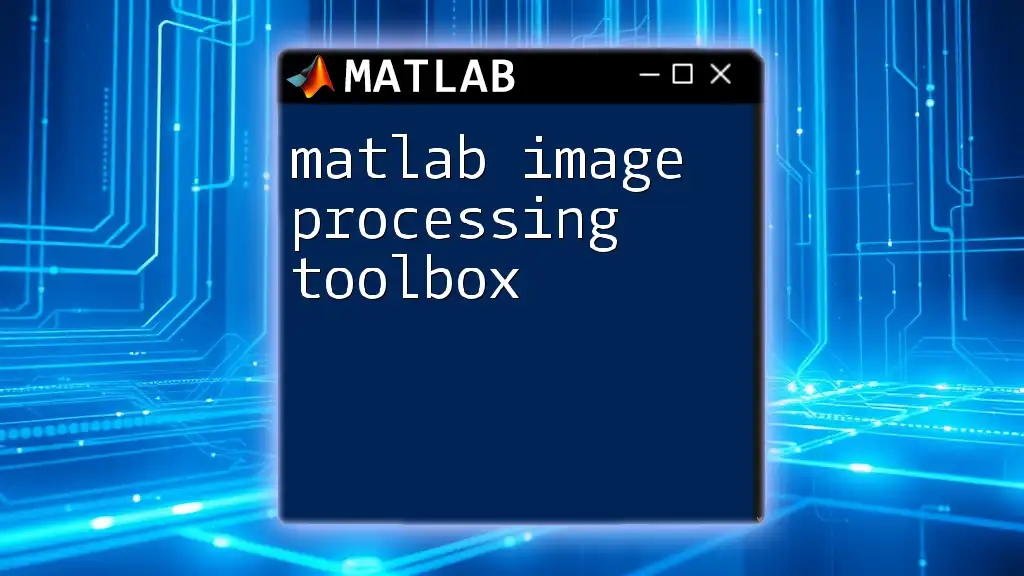
Advanced Image Processing Techniques
Filtering Images
Noisy images can dramatically affect analysis outcomes. Thus, applying various filters is a common practice in image processing.
Understanding Noise in Images
Noise can be caused by several factors like low light and sensor sensitivity. The Gaussian filter is particularly effective in reducing noise. You can implement it as follows:
filtered_img = imgaussfilt(img, 2); % Gaussian filter with standard deviation 2
imshow(filtered_img);
The value specified affects the extent of smoothing performed, where a larger value results in more blurring.
Image Segmentation
Segmentation helps to identify and isolate objects within an image.
Using Thresholding
Thresholding is a simple yet effective segmentation technique. Here’s an example using automatic thresholding:
BW = imbinarize(img); % Binary image based on intensity
imshow(BW);
This will convert the grayscale image into a binary version, separating foreground from the background, which is particularly useful when isolating features within an image.
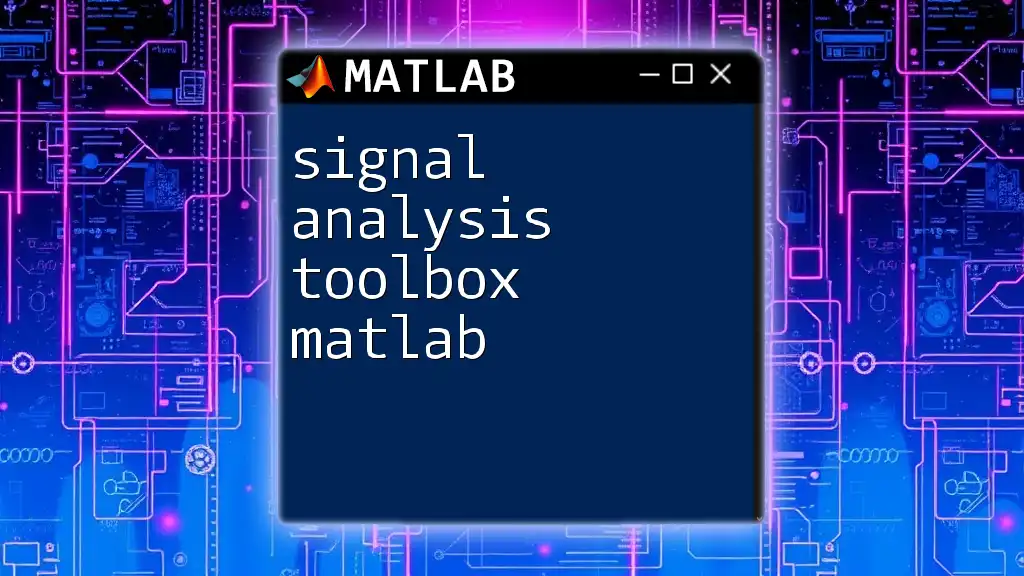
Feature Detection and Extraction
Edge Detection
Edge detection is critical for identifying boundaries within images. MATLAB offers techniques like the Canny edge detector, which is popular for its effectiveness and efficiency:
edges = edge(img, 'Canny');
imshow(edges);
This function highlights strong gradients in pixel intensity, allowing you to see the edges more clearly.
Corner and Blob Detection
Detecting specific features such as corners and blobs can be achieved through built-in functions in the toolbox. For example, MATLAB includes the `corner` function for corner detection and `detectSURFFeatures` for blob detection, which are both excellent for feature extraction tasks.

Image Enhancement Techniques
Histogram Equalization
Improving the visibility of images is vital in many applications, and histogram equalization is a common technique:
enhanced_img = histeq(img);
imshow(enhanced_img);
This method redistributes pixel values, enhancing contrast and improving perception significantly, especially in medical imaging applications.
Morphological Operations
Morphological operations, such as dilation and erosion, are often used to process binary images:
se = strel('disk', 5); % Structuring element
dilated_img = imdilate(BW, se);
imshow(dilated_img);
Dilation expands the features, which can be useful for closing gaps in objects.

Working with Multispectral and Hyperspectral Images
Understanding Multispectral Imaging
Multispectral images capture data at different wavelengths and are useful in applications like agricultural monitoring and land use classification. MATLAB has specific functions to manipulate and analyze these types of images.
Processing and Analyzing Hyperspectral Data
Hyperspectral data involves a larger number of channels and can be processed utilizing various functions available in the imaging toolbox. You may need to apply techniques such as PCA or clustering for dimensionality reduction and analysis.

Creating and Analyzing Image Data Sets
To effectively manage your projects, building an organized database of images is essential. MATLAB allows you to automate image processing tasks, including batch processing. You can leverage loops and custom functions to streamline repetitive tasks, enhancing efficiency and productivity.

Practical Applications of Image Processing
Medical Imaging
One of the most impactful applications of the imaging processing toolbox in MATLAB is in medical imaging. Techniques applied include noise reduction and segmentation to accurately analyze medical scans, aiding in diagnosis and research.
Face Detection and Recognition
MATLAB's toolbox is also capable of face detection and recognition through various built-in functions. This application is widely used in security systems as well as social media tagging features.

Conclusion
The imaging processing toolbox in MATLAB provides a robust set of tools to perform a wide array of image processing tasks efficiently. Each technique—from basic transformations to advanced filtering and feature extraction—opens a world of possibilities in digital image processing. As you delve deeper into this field, continually experiment with the tools and techniques available to broaden your understanding and enhance your skills.
Exploring resources beyond this guide, such as the official MATLAB documentation or related books, will further expand your abilities and knowledge in imaging processing applications.









